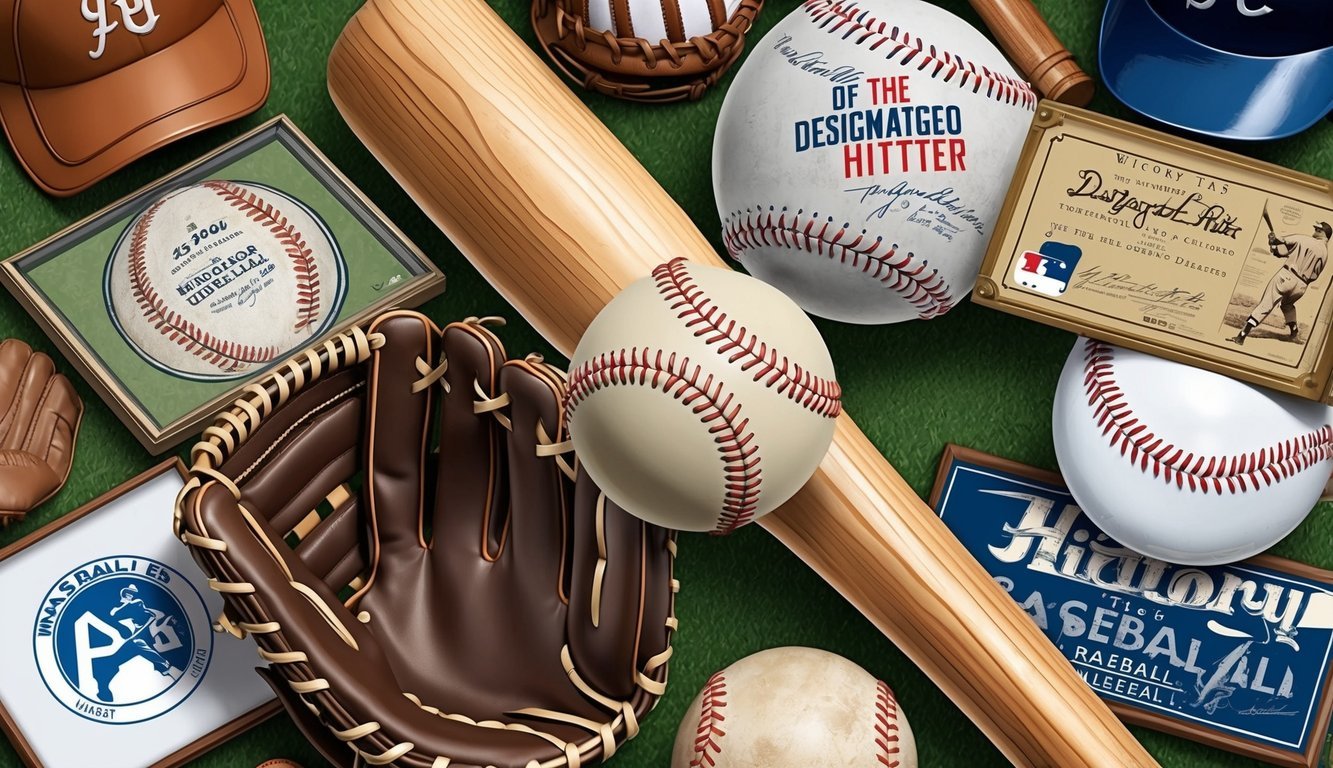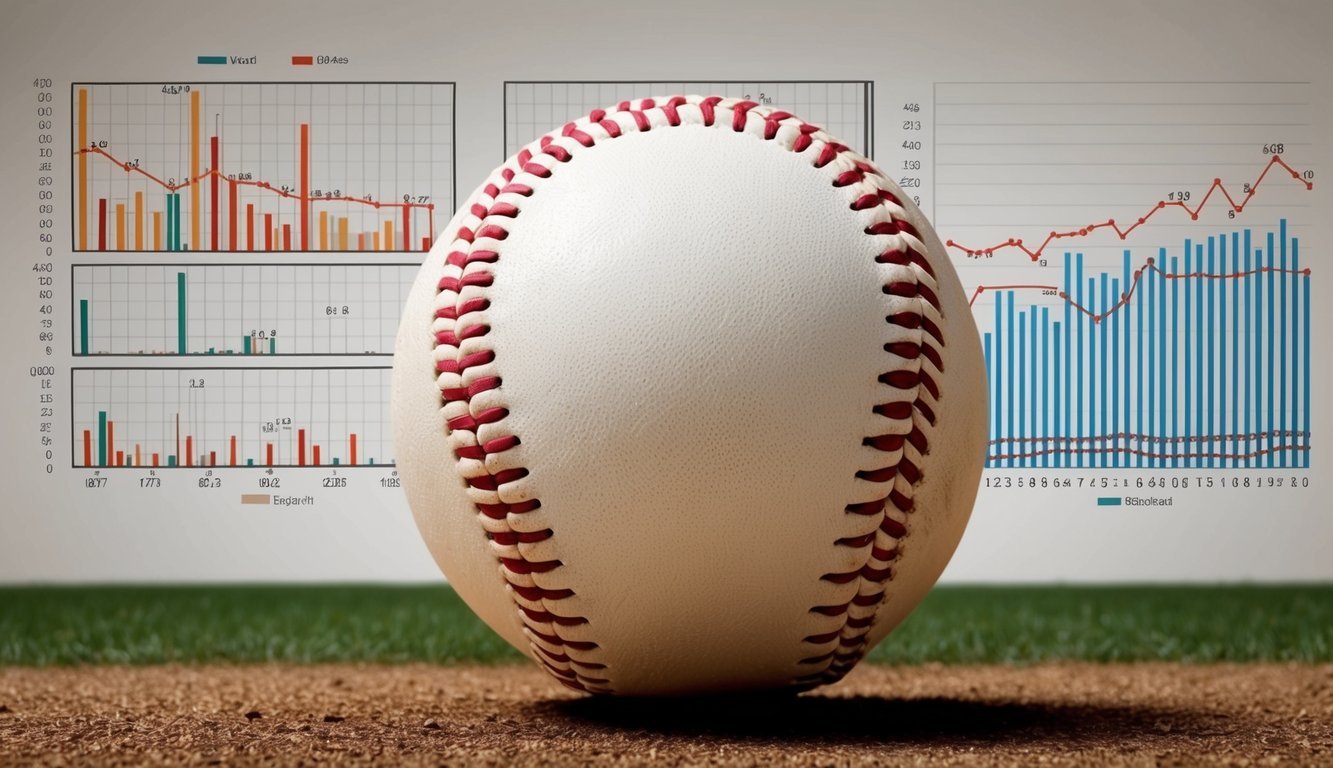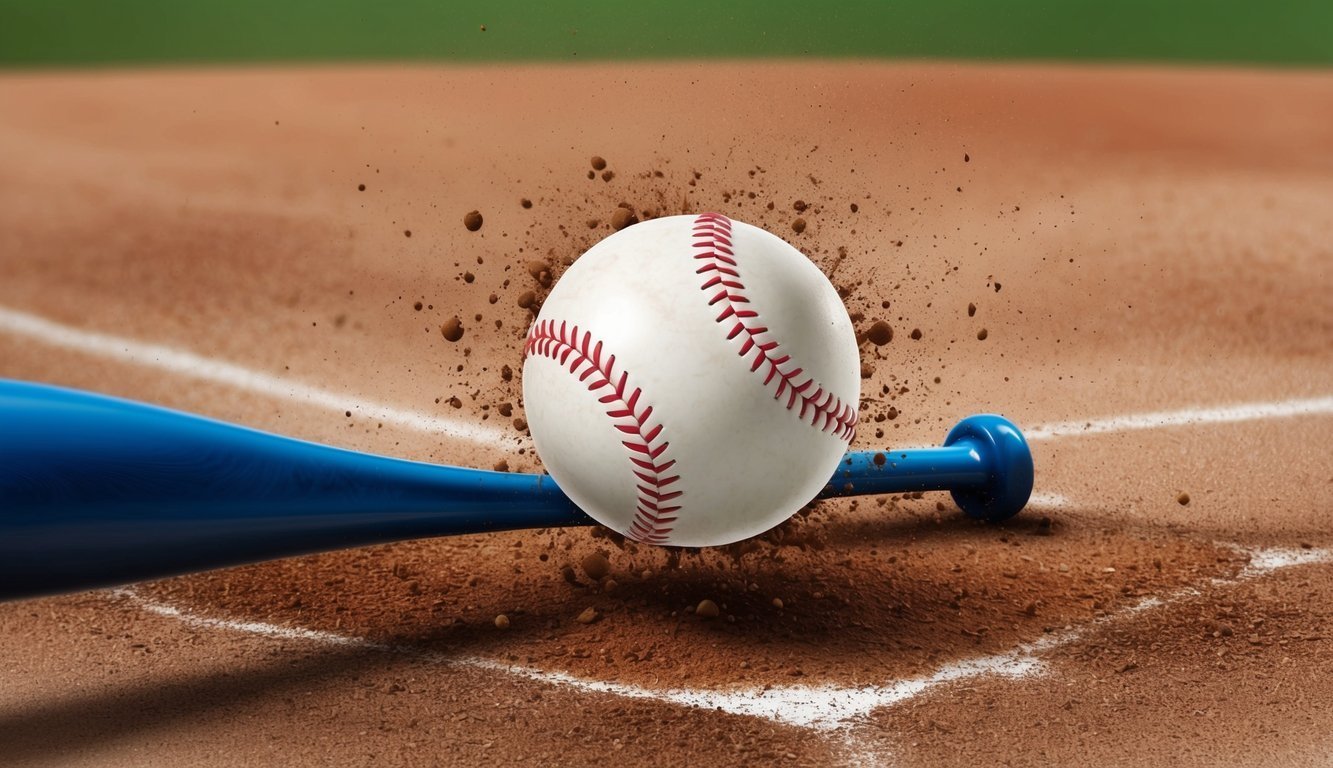Baseball fans know the sting of a pitch gone astray.
Hit-by-pitch (HBP) is a common occurrence in America’s pastime, where a batter is struck by a thrown ball.
A pitch hitting a batter awards them first base, adding an interesting tactical element to the game.
HBP statistics have become an important part of player evaluations.
Some batters, like Hughie Jennings and Craig Biggio, have turned getting hit into an art form, leading the all-time HBP lists with 287 and 285 respectively.
These players demonstrate how a seemingly negative event can be turned into a strategic advantage.
The rules surrounding HBP are nuanced.
Umpires must judge if a batter made an effort to avoid the pitch.
Even equipment can play a role – a ball striking a glove hanging out of a batter’s pocket counts as an HBP.
These intricacies add depth to baseball’s rich tapestry of rules and strategies.
History and Evolution of HBP

Hit by pitch (HBP) has been part of baseball since its early days.
The phenomenon has evolved significantly over time, influenced by changing rules, equipment, and playing styles.
Early Days in the 1920s
In the 1920s, HBPs were less common than today.
Pitchers often threw inside to intimidate batters, but protective gear was minimal.
Batters relied on quick reflexes to avoid getting hit.
The league saw fewer HBPs per game compared to modern standards.
Players like Hughie Jennings stood out for their high HBP counts, often using it as a strategy to reach base.
Pitchers had more leeway in brushing batters back from the plate.
This era set the stage for the strategic use of HBPs in baseball.
Changes in Rules and Equipment
As MLB evolved, so did the approach to HBPs.
The introduction of batting helmets in the 1950s increased batter safety.
This allowed hitters to crowd the plate more confidently.
Rule changes also impacted HBPs.
Umpires became stricter about pitchers intentionally hitting batters.
This led to more ejections and suspensions for dangerous pitches.
Recent years have seen a surge in HBPs.
The 2019 MLB season set a record with 1,984 hit batters.
This trend reflects changes in pitching styles and batter approaches.
Modern players often wear elbow guards and shin protectors.
These allow them to stand closer to the plate, increasing HBP chances but also improving hitting opportunities.
Additionally, the use of advanced protective gear has led to a notable rise in offensive statistics, as players feel more confident standing in against pitched balls.
Moreover, the aesthetic choices made by baseball players, such as wearing eye black, provide both psychological and physical benefits, helping reduce glare and improve focus on the ball.
Overall, modern equipment, including elbow guards and shin protectors, combined with baseball players and eye black benefits, contributes to a more dynamic and aggressive playing style on the field.
Understanding the Basics of HBP
HBP, or Hit by Pitch, is a crucial aspect of baseball that impacts both batters and pitchers.
It occurs when a pitched ball strikes a batter, resulting in an automatic advancement to first base.
Defining a Hit by Pitch
A Hit by Pitch happens when a thrown ball from the pitcher makes contact with the batter’s body, uniform, or equipment.
The umpire must determine if the batter made an effort to avoid being hit.
If the pitch is in the strike zone or the batter swings, an HBP is not called.
Instead, it’s ruled a strike.
When an HBP is called, the batter takes first base without risk of being put out.
This can be a valuable way to get on base for the offensive team.
Roles of the Pitcher and Batter
Pitchers aim to avoid hitting batters, as it gives away a free base.
Control is key for pitchers to prevent unintentional HBPs.
Some pitchers may use inside pitches to intimidate batters or claim the inner part of the plate.
This strategy can lead to more HBPs.
Batters must make an attempt to avoid being hit by pitches.
If they lean into a pitch or don’t try to move, the umpire may not award them first base.
Smart batters might crowd the plate to make pitchers uncomfortable, potentially increasing their chances of an HBP.
Umpires play a crucial role in determining if a pitch that hits a batter should be ruled an HBP or a strike.
Statistical Analysis and Records

Hit by pitch (HBP) statistics offer fascinating insights into baseball history and strategy.
These numbers reveal trends, records, and the impact of this unique aspect of the game.
HBP in Major League Baseball Stats
Major League Baseball tracks HBP data meticulously.
Sports Reference LLC and Retrosheet provide comprehensive databases for researchers and fans.
These stats show how HBP rates have changed over time.
Some key HBP statistics include:
- Total HBP per season
- HBP per team
- Individual player HBP totals
HBP can affect game outcomes.
Win expectancy and run expectancy models factor in HBP situations.
The Leverage Index also considers HBP in high-pressure moments.
Significant HBP Records
Hughie Jennings holds the single-season record with 51 HBP in 1896.
This remarkable feat stands out in baseball history.
Don Baylor leads modern players with 267 career HBP.
Other notable HBP records:
- Most HBP in a single game: 3 (shared by multiple players)
- Most HBP in a single postseason: 5 (David Eckstein, 2002)
Team records are also noteworthy.
The 2021 Cincinnati Reds set a National League record with 105 HBP in a season.
These stats highlight how HBP can be both a strategy and a hazard in baseball.
Impact of HBP on Players and the Game

Hit by pitch incidents can dramatically affect player safety and shape game strategies.
These moments often carry significant consequences for both individual players and overall team dynamics.
Injuries and Player Safety
Hit by pitch events pose serious injury risks to batters.
Getting struck by a fastball traveling 90+ mph can cause bruises, broken bones, or even concussions.
Many players have missed games or entire seasons due to HBP injuries.
Protective gear has evolved in response.
Batters now commonly wear elbow guards, shin guards, and reinforced helmets with face shields.
Some players don specialized protective gear after recovering from HBP injuries.
The MLB has implemented rule changes to enhance player safety.
Pitchers intentionally throwing at batters face suspensions and fines.
Umpires have more authority to eject players for dangerous pitches.
Strategic Use and Game Dynamics
HBP can be a tactical tool for pitchers and managers.
Some use inside pitches to intimidate batters or reclaim control of the plate.
This strategy aims to make batters uncomfortable and less likely to crowd the plate.
For batters, getting hit means a free base.
Some players specialize in “taking one for the team” by positioning themselves to get hit.
This skill can be valuable in critical game situations.
HBP incidents can shift momentum.
A hit batter might spark bench-clearing confrontations or lead to retaliatory pitches.
These moments often energize teams and fans, potentially changing the course of a game or series.
Managers must balance aggressive inside pitching with the risk of giving up free baserunners.
This decision-making adds an extra layer of strategy to the game, especially in close contests.
HBP in Baseball Culture and Media
Hit by pitch incidents have shaped baseball culture and sparked intense media coverage over the years.
These moments often become part of team rivalries and player legacies.
Famous Incidents and Feuds
Don Drysdale, the Dodgers’ legendary pitcher, was known for his aggressive inside pitches.
He once said, “My own little rule was two for one.
If one of my teammates got knocked down, then I’d knock down two on the other team.”
Craig Biggio holds the modern-era record for most HBPs with 285.
He wore an elbow guard and stood close to the plate, making him a frequent target.
Anthony Rizzo’s leaning-in technique at the plate has sparked debates about the line between strategy and unsportsmanlike conduct.
Some pitchers view his approach as deliberately trying to get hit.
Representation in Sports Media
Sports networks often replay dramatic HBP moments.
They analyze pitch location and player reactions.
These incidents can dominate post-game discussions and social media.
Websites like SportsLogos.net sometimes feature images of players getting hit.
However, they must be careful about copyright issues when using such photos.
Media coverage of HBPs tends to focus on potential injuries, team rivalries, and debates about intentional vs. accidental hits.
Commentators often speculate about possible retaliation.
This adds to the drama of future matchups.
